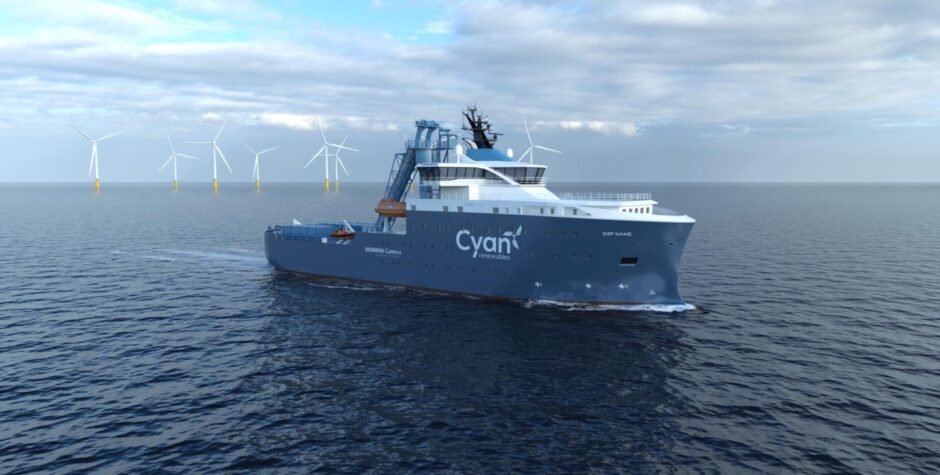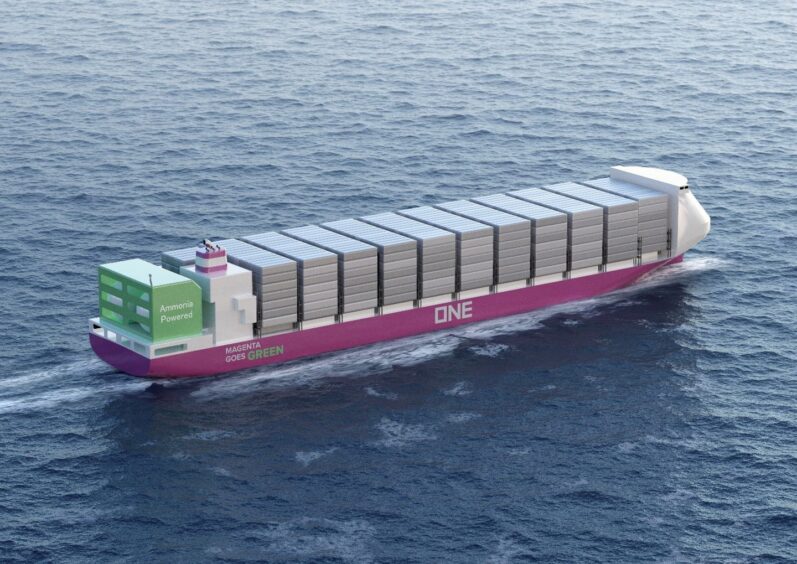
Norwegian shipbuilding group Vard has secured a contract to design and build a hybrid-fuelled service operation vessel (SOV) for Singapore-based offshore wind vessel owner Cyan Renewables.
The ship, a version of Vard’s successful 4 19 design, has been ordered against Cyan having secured a long-term contract with Siemens Gamesa for use at the Hai Long No. 2 wind farm offshore Taiwan. Contract duration is thought to be 15 years.
The diesel-electric vessel will combine modern DC technology with two retractable azimuth thrusters. According to VARD, this will allow the ship to operate using one variable-speed generator set, in addition to batteries, during an extended operational offshore window.
Use of permanent magnetic electric motors for the ships propellers is expected to help with overall efficiency during operations; improving DP capability and delivering noise reduction.
Vard Design is developing the vessel with Cyan to suit prevailing conditions at Hai Long.
Subsidiary Seaonics will provide an ECMC 30m walk-to-work gangway, a fixed pedestal gangway version with a 3-tonnes capacity motion compensated crane, including a cargo elevator.
Another subsidiary, Vard Electro, is to develop and supply a SeaQ Bridge and an integrated power and automation package with a focus on tank-to-wake efficiency, including a battery system for use in-field.
Vard Interiors will be responsible for comfort aspects including a “green” HVAC R-system, the objective being to improve the working environment onboard the vessel.
The vessel will be built, outfitted and commissioned in the Far East at Vard’s Vung Tau yard in Vietnam, with delivery scheduled for Q2 2026.
Cyan Renewables is Asia’s first dedicated offshore wind vessel owner and recently acquired a controlling stake in Aberdeen’s Sentinel Marine.
It was set up in 2022 by investment management company Seraya Partners. Founding CEO is Lee Keng Lin and Lars Christian Zøhner was taken on board to lead its European business.
Cyan says it “owns, operates, and lease vessels across the offshore wind farm value chain” including crew transfer and construction and service operations It plans to add a cable-lay function in due course.
On a completely different tack but still in Singapore, Ocean Network Express (ONE) has gone ahead with its “award in principle” (AiP) for an ammonia (NH3) dual-fuelled vessel.
Along with the very recent investment in 12 methanol dual-fuelled 13,000 containers capacity box ships, this marks another milestone for ONE on its voyage towards net-zero by 2050.
The newly AiP-awarded 3,500 TEU (standard containers capacity) vessel has been jointly developed by ONE, Nihon Shipyard (NSY) of Japan and classification society DNV as part of a joint development project established in late 2022 between the three parties.
ONE has been studying the feasibility of ammonia as an zero emissions alternative fuel since 2022, to the extent of participating in a Global Centre of Maritime Decarbonisation-led ammonia bunkering pilot safety study.
“Ammonia is definitely one of the primary focuses of our research as ammonia fuel has a great potential of generating lower GHG emissions than conventional marine fuels,” said Koshiro Wake, a senior VP at the group.
“Ammonia is one of the promising future marine fuels with great potential to decarbonize shipping. We are grateful to our JDP partners for entrusting us with this pioneering project that will help the entire maritime industry to adopt ammonia as a marine fuel.”
It is only a few weeks since ONE placed its 12 methanol-fuelled ships order. China’s Jiangnan Shipyard and Yangzijiang Shipbuilding will each build six.
The vessels are scheduled to be delivered from 2027 and ONE’s inaugural fleet of methanol dual-fuel vessels are expected to play a key role in achieving the group’s eventual zero emissions strategy.
The ships will also incorporate optimised hull form, waste heat recovery systems and bow windshields.
Ocean Network Express is a huge group and was formed in 2017 following the liner service integrations of Kawasaki Kisen Kaisha (K-Line), Mitsui O.S.K. Lines (MOL) and Nippon Yusen Kaisha (NYK).
It operates more than 230 vessels and ranks as the world’s sixth largest container carrier with a fleet capacity of 1.8million TEU.
While the global HQ is in Singapore, it has regional headquarters in Singapore itself, plus in Hong Kong, Singapore, UK, the US and Brazil and is a member of THE Alliance (THEA), a global ocean carrier consortium.
Recommended for you

 © Supplied by Ocean Network Expres
© Supplied by Ocean Network Expres